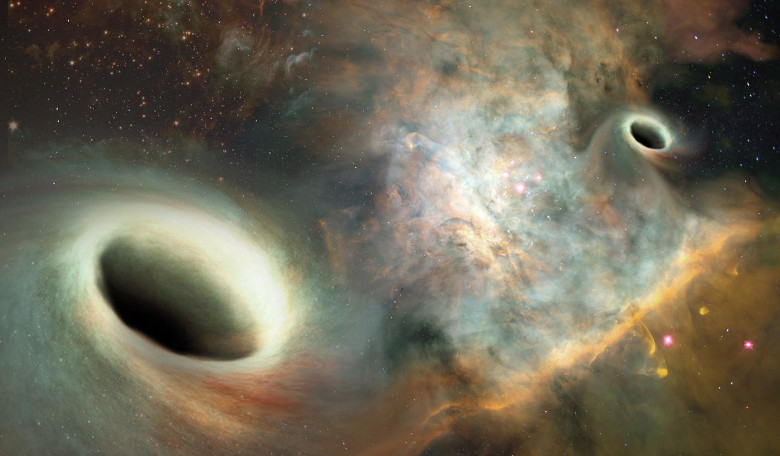Astronomers are celebrating a triumph in technical achievement as they have finally observed and measured, after 12 years, how long it takes for two supermassive black holes, roughly 750 million light years away from Earth, to orbit one another after their host galaxies collided – an interaction that has been theorised for some time but has not been witnessed until now.
The groundbreaking discovery by a team of astronomers at The University of New Mexico, confirms the existence of two black holes with a combined mass of 15 billion times that of our sun, or 15 billion solar masses spiralling around one another in a galaxy known as 0402+379. Their results show that the sheer size of the black holes means that it takes 24, 000 years for one orbital period, I.e. the time a given astronomical object takes to complete one orbit around another object.
Just how difficult has this phenomena been to observe and calculate? Well, Roger W. Romani, a professor of physics at Stanford University and member of the research team, likened the situation to watching and calculating the pace of a snail on the surface of the our nearest exoplanet – which orbits Proxima Centauri 4.243 light years away – as it moves at 1 cm a second. Pretty slow then.
"What we've been able to do is a true technical achievement over this 12-year period using the VLBA to achieve sufficient resolution and precision in the astrometry to actually see the orbit happening," said UNM Professor Greg Taylor. "It's a bit of a triumph in technology to have been able to do this."
The Very Long Baseline Array (VLBA) is a system made up of 10 radio telescopes across the U.S. and operated in Socorro, New Mexico. Using the array, the team involved have been able to observe several frequencies of radio signals emitted by the ginormous pair over a decade, in order to plot their trajectory and confirm them as a visual binary system.
"When Dr. Taylor gave me this data I was at the very beginning of learning how to image and understand it," said graduate student Karishma Bansal, the first-author on the recent paper published in The Astrophysical Journal. “And, as I learned there was data going back to 2003, we plotted it and determined they are orbiting one another. It's very exciting."
For Taylor, the discovery is the result of more than 20 years of work and its implication could be far reaching. “Supermassive black holes have a lot of influence on the stars around them and the growth and evolution of the galaxy," explained Taylor. "So, understanding more about them and what happens when they merge with one another could be important for our understanding for the Universe.
The finding could also help scientists understand where galaxies come from and where they are going – including our own. Our nearest largest neighbour the Andromeda galaxy, is predicted to collide with the Milky Way in about four billion years time. While we might not be around as a species to witness the aftermath for ourselves, researchers such as Bansai and Taylor could paint a very accurate picture of what might happen long before the event occurs.
For now however, the research team will wait another three or four years before taking another look at the system to confirm its motion and to constrain its precise orbit.











